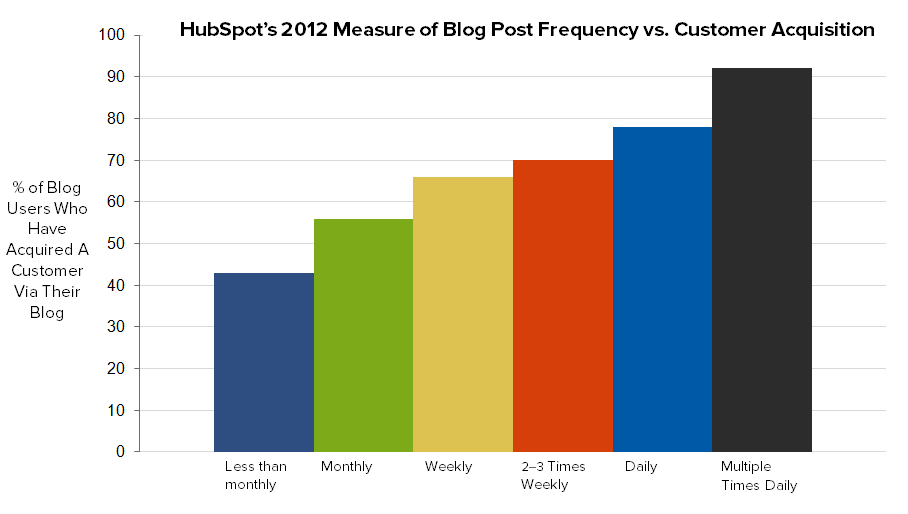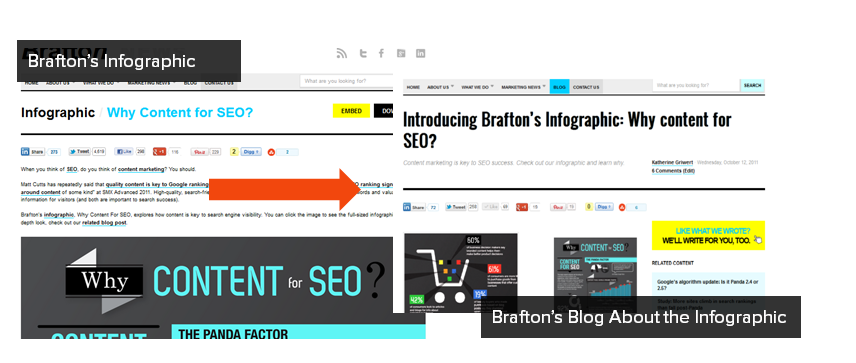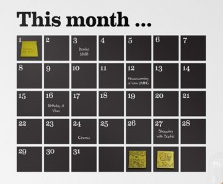Consider the blogs and websites you refer to on a daily basis – the ones that have made it to your bookmarked or favorites list. Their content marketing strategies may include insights on trending topics or top-notch news articles relevant to the industries they cover. Whatever the case may be, their content is on-point, well-written and engaging, right? Compelling website content is essential to any company vying for consumers’ attention in the online arena today, and consistency and consistently good stories are key to making your brand a resource prospects want to revisit and do business with.
In order for you capture your target audience’s time and interest – and keep them returning to your site rather than a competitor’s – it’s essential that your content marketing strategy start on stable ground. This all begins with a well-planned editorial calendar.
I’m not saying you need to plan your daily headlines weeks in advance. In fact, in some ways, that type of planning can prevent you from taking advantage of the dynamic search and social trends that will engage online audiences. Instead, think strategically about the type of content that will tell the best brand stories, and then set a plan to sustainably provide this information to website visitors and social followers.
Organizing your content marketing strategy will allow you to hone in on important keywords and position your brand as a thought leader. It will also hold you accountable for regular updates, helping you get a competitive edge: Nearly three-quarters of marketers struggle to produce enough content, and roughly the same amount can’t find the time to do it. All in all, a calendar will help you achieve the primary goal of delivering your audience well-written blogs and news articles that they will want to come back to read.
So, where do you begin?
Set a minimum publishing frequency
While you don’t want to sacrifice quality for quantity, you need to set a plan so that you don’t neglect updating your website content for days at a time. This is essential to maintaining visibility for your content to reach prospects in the first place. Social media is so fast paced that if you’re not sharing content regularly, you’re missing opportunities to drive social traffic to your site. Plus, search is increasingly about fresh web pages. Brafton has reported that Google has an algorithm devoted to providing recent results, and the search giant’s latest algorithm updates include a number of features that focus on the publication dates of all web results.
When first laying out your strategic calender, determine the minimum number of articles or blogs you can commit to posting on a weekly basis. No one likes to discover a favorite website dropped the ball with its blog and neglected to make a post for three weeks. Not only will this discredit your blog, but SERPs will fail to reward your efforts. To see the best SEO results, we recommend at least three to five fresh content posts per week – and more updates mean more chances of converting readers.
In addition to boosting the visibility of your content, frequently updated content is essential to drawing repeat visitors and winning conversions: 92 percent of companies that have acquired customers via their blogs add news posts multiple times per day.

Manpower is often a challenge for businesses, so make sure you find quality content writers who can write for your audiences and maintain the pace you need to perform on the web.
Along the same vein, set aside time to brainstorm daily and weekly headlines as part of your broader editorial brief. This effort should aim to account for the variety of topics you want to cover – while leaving room for flexibility. Let’s say your company is in the travel industry, publishing news and blogs that hopefully influence trips to the Caribbean. You may want to write some blogs on packing tips or cover cruise ship safety – headlines that can be planned well in advance and aren’t too timely. If a major storm rocks the coast, though, that will shake up your editorial calendar. You wouldn’t want to have such a concrete plan in place that you couldn’t adjust the daily headlines accordingly.
Incorporate a variety of content types into your strategy
In light of the Google’s Panda updates, SERPs are rewarding those websites and blogs that incorporate a variety of content lengths and types into their overall approach. This range might include brief blogs, extensive whitepapers, video content marketing, infographics or other types of downloadable content. You’ll want to plan the right mix for your brand, and consider how these various forms of content can be published alongside each other, working in concert to engage online audiences.
Start by thinking about which types of content will most appeal to your target audience. For instance, Brafton has reported that Millennials respond strongly to video marketing, and men making health industry purchases search for content that offers best practices.
Including multiple types of content in your strategy will not only help keep your site engaging, but it provides opportunities to repurpose content and related research efforts. Creating an infographic? You should also plan to promote it with several related blogs to boost traffic and increase its shareability. Drafting a white paper for next quarter? Start the buzz now with a news article that shares some of the data included, or use a press release to promote it. This type of planning requires some work upfront, but a good strategy should help you find ways to synergize and maximize the work you put into your content.
When sticking to standard blog posts and news articles, you can still plan for variety. Feel free to up your news content length. Readers are looking to you for insights and relevant information, and a 300-word range post may not always hit the mark. On the other hand, a 1,000-word article may be too lengthy for certain topics or source material you’re writing on.
Just as you should leave room for flexibility with respect to headlines in your strategy, you should also plan for flexibility with respect to article lengths depending on subjects. And, once again, finding content writers who can help you dedicate the appropriate word count or resource to different content projects is essential to focusing on the story your brand tells (rather than the number of words it uses to tell it).
Consider seasonal trends when mapping out your editorial calendar
Remember how I suggested brainstorming weekly headlines to cover the topics you want to hit? You can be even more strategic by thinking of topics you want to include during different seasons that are big for your business.
While some seasonal trends, such as snowmen and Valentine’s day gifts, may not be relevant to every business, site traffic during tax season, common budget planning periods and even the summer do impact many. As you sit down to draft your content marketing strategy, think of the times of year when sales are strongest for you. Also, consider the season during the upcoming month or quarter. If you’re a home improvement business preparing for summer, you may want to push additional content on your selection of lawnmowers and feature a video marketing tutorial on the latest gardening equipment.
By planning ahead for your peak season with content that is somewhat “evergreen” (in the sense that it isn’t based on industry news developments and applies to the broader time of year), you’ll be able to start drafting this content in advance. Then, you’ll be armed with an arsenal of timely articles and blog posts to publish once the season hits. If you know there’s a time of year that is best for your brand, you might even properly prepare by taking on additional content writers to start writing articles in advance. This way, you can time the release of blogs and posts properly, so readers don’t see any lapse in content. Particularly during a seasonal boost, it’s essential to keep your digital content flowing!
 When mapping your strategy, make sure you’re considering the volume you will be able to commit to and the tools that will best help you achieve your content marketing goals. For larger projects, such as case studies, white papers or infographics, be sure to allow for both outlines, rough drafts and lead time before you plan on publishing the final product.
When mapping your strategy, make sure you’re considering the volume you will be able to commit to and the tools that will best help you achieve your content marketing goals. For larger projects, such as case studies, white papers or infographics, be sure to allow for both outlines, rough drafts and lead time before you plan on publishing the final product.
Once you’ve been working off your calendar for a bit, revisit it! Work out the kinks to make sure your strategy is as tailored to your needs as possible. The key to any well-functioning editorial calendar is your ability to stick to it – allowing you to both deliver strong content to prospects and see SEO results over time.

